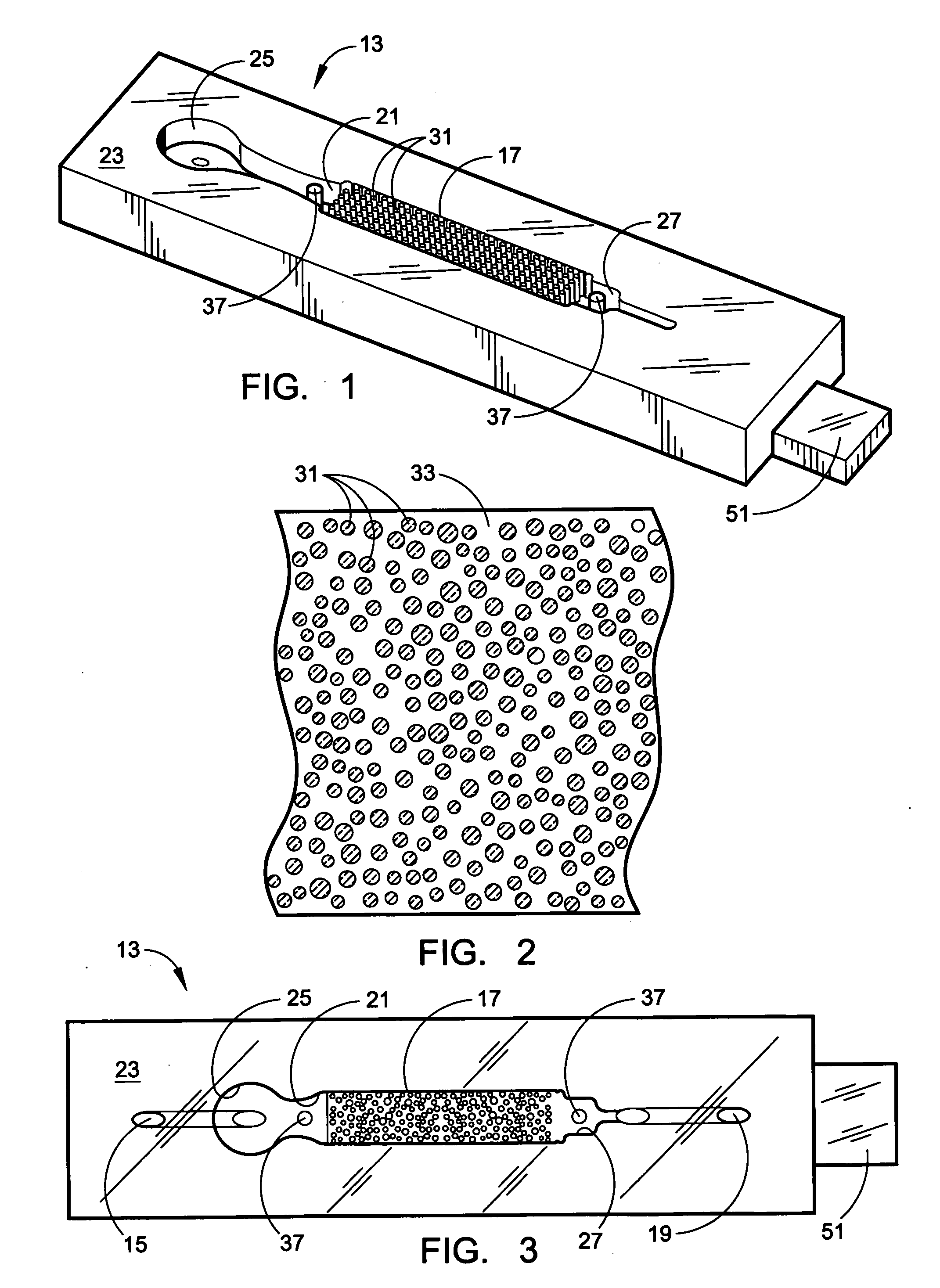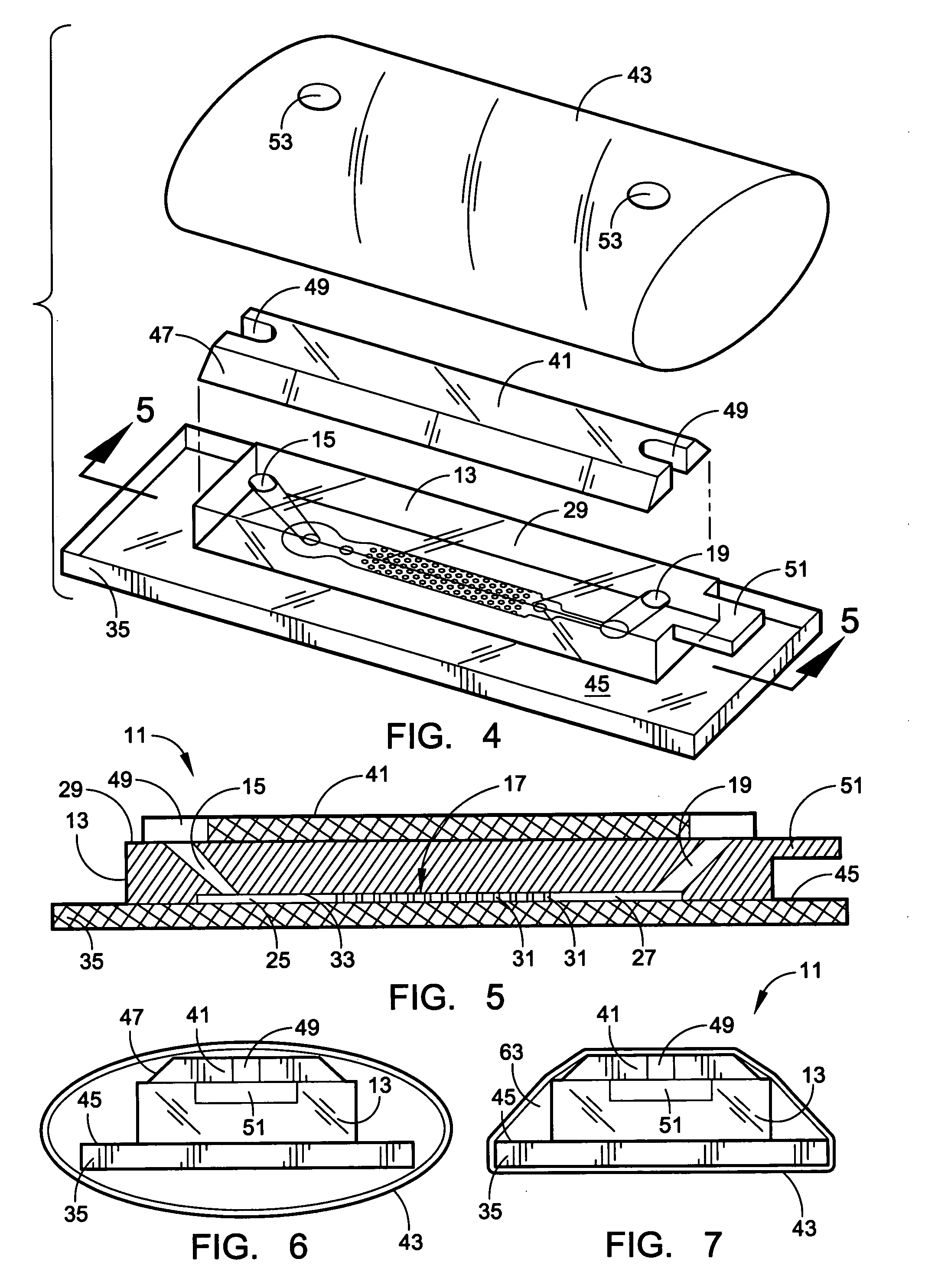Device for cell separation and analysis and method of using
a cell and analysis technology, applied in the field of cell separation and analysis, can solve the problems of method risks and associated significant challenges, and achieve the effect of facilitating separation
- Summary
- Abstract
- Description
- Claims
- Application Information
AI Technical Summary
Benefits of technology
Problems solved by technology
Method used
Image
Examples
example 1
[0051] A microflow device for separating biomolecules is constructed to provide a prototype device as in the drawings. The body 13 is formed from PDMS, and with a cap plate 41 in place, it is pressed against a flat glass plate 35 by a heat-shrunken sleeve 43 of dimensionally oriented polymer to close the flow channel. The interior surfaces throughout the collection region 17 are derivatized by incubating for 30 minutes at room temperature with a 10 volume % solution of Dow Corning Z-6020 or Z-6011. After washing with ethanol, they are treated with nonfat milk at room temperature for about one hour to produce a thin casein coating. Following washing with 10% ethanol in water, a treatment is effected to coat all the interior surface with a permeable hydrogel that is based on isocyanate-capped PEG triols having an average MW of about 6000. A prepolymer solution is made using 1 part by weight polymer to 6 parts of organic solvent, i.e. acetonitrile and DMF, and it is mixed with an 1 mg / ...
example 2
[0055] Another microflow device of the same construction is similarly coated with a permeable hydrogel which carries Trop-1 and Trop-2 Abs. Cervical mucus from expectant mothers (8-12 weeks gestation) is diluted to 10 ml with HAM's media (InVitrogen) and treated with DNAse (120 units) at 37° C. for 30 minutes. After filtering through a 100 μm cell strainer, the cells are spun at 1500 RPM for 30 minutes. The cell pellet is resuspended in HAM's media (100 μl) and passed through the Trop-1 and Trop-2 coated microflow device by connecting the outlet tubing to a vacuum pump and supplying about 50 microliters of this cell suspension of cervical mucus extract to a vertically oriented conical reservoir. The pump is operated to produce a slow continuous flow of the sample liquid through the microflow device at room temperature and preferably at a rate of about 3-5 μl / min. During this period, the Trop-1 and Trop-2 Abs that are attached to the surfaces in the collection region, capture trophob...
PUM
| Property | Measurement | Unit |
|---|---|---|
| Fraction | aaaaa | aaaaa |
| Fraction | aaaaa | aaaaa |
| Fraction | aaaaa | aaaaa |
Abstract
Description
Claims
Application Information
 Login to View More
Login to View More - R&D
- Intellectual Property
- Life Sciences
- Materials
- Tech Scout
- Unparalleled Data Quality
- Higher Quality Content
- 60% Fewer Hallucinations
Browse by: Latest US Patents, China's latest patents, Technical Efficacy Thesaurus, Application Domain, Technology Topic, Popular Technical Reports.
© 2025 PatSnap. All rights reserved.Legal|Privacy policy|Modern Slavery Act Transparency Statement|Sitemap|About US| Contact US: help@patsnap.com



